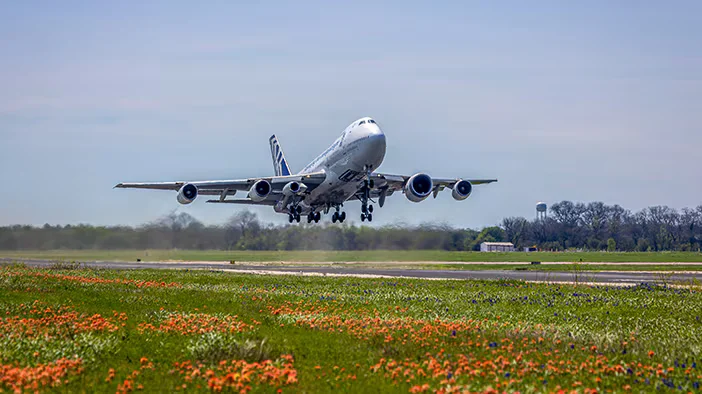Rolls-Royce, known for its powerful jet engines and luxury cars, has commenced the flight testing of its latest engine, the Rolls-Royce Pearl 10X. This powerful engine is slated to propel the Dassault Falcon 10X, the flagship aircraft of the esteemed French manufacturer. The maiden flight of the Pearl 10X took place aboard a Boeing 747 flying testbed dedicated to this endeavor.
The Pearl 10X is the newest addition to Rolls-Royce’s state-of-the-art Pearl engine family and marks the company’s inaugural venture into powering a Dassault business jet. In the forthcoming months, pilots and flight test engineers will rigorously examine the engine’s performance as part of an extensive flight test program encompassing various speeds and altitudes.
Senior Vice President Philipp Zeller of Dassault Aviation expressed enthusiasm about this critical phase, stating, We are excited to enter into this important next phase of the engine development programme with the start of our flight test campaign. All the tests completed to date confirm the reliability of the engine and show it will meet the performance requirements to power Dassault’s flagship, the Falcon 10X.”

Ensuring the efficiency and dependability of engines before integration into customer service is paramount. Rolls-Royce utilizes a Flying Test Bed (FTB) – a modified Boeing 747-200 stationed in Tucson, Arizona – to achieve this goal. The FTB allows for real-life test runs in the air and provides invaluable performance data, exceeding 20GB per day, surpassing the monthly data usage of an average UK household.
ALSO READ: Radia Unveils WindRunner: World’s Largest Aircraft for Wind Turbine Blades
Rolls-Royce Pearl 10X Engine Specifications
| Aspect | Details |
|---|---|
| Engine Family | Pearl |
| Engine Type | Turbofan |
| Maximum Thrust | Over 18,000 lbf |
| Core Type | Advance2 Engine Core |
| Combustor | Ultra-Low Emissions ALM Combustor, compatible with 100% Sustainable Aviation Fuel (SAF) |
| Gearbox | New Accessory Gearbox allowing for higher additional power extraction |
| Efficiency Improvement | 5% higher efficiency compared to previous Rolls-Royce business aviation engines |
| Noise Emissions | Outstanding low noise performance |
| Environmental Performance | Ultra-low emissions |
| Maximum Altitude Capability | Suitable for ultra-long-range flights |
| Speed | Capable of nearly reaching the speed of sound |
The flight test program involves a unique configuration where the FTB operates with five engines, showcasing the Pearl 10X alongside a Trent 1000 and three RB211s. The Trent 1000, recognized for its fuel efficiency and reliability, and the RB211, a trusted turbofan engine in service since the 1970s, underscore Rolls-Royce’s commitment to pushing boundaries in aviation technology.

Deborah Robinson, Director of Test and Experimental Engineering at Rolls-Royce, highlighted the significance of the FTB in their testing endeavors. She emphasized that while computer simulations and rig tests are valuable, conducting tests in the air allows for a comprehensive validation of extensive ground and rig test programs.
“We can take the opportunity to test the corners of the flight envelope and feedback into our extensive models,” she added.
ALSO READ: Hainan Airlines leads the way by offering AR glasses for In-flight Entertainment
Testing flights play a pivotal role in verifying engine performance and fuel efficiency, ensuring safety standards are met. These tests are conducted with meticulous attention to detail by both pilots and engineers, reflecting Rolls-Royce’s dedication to excellence in aviation engineering.









